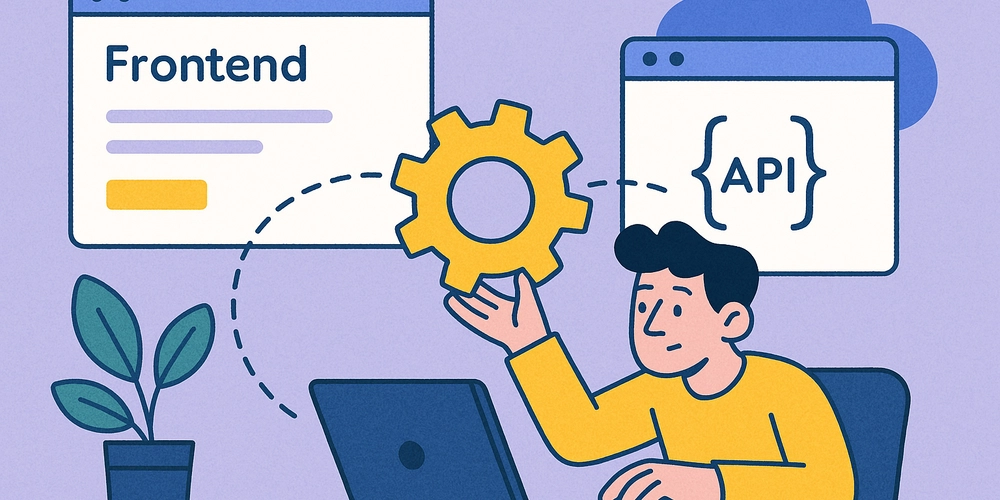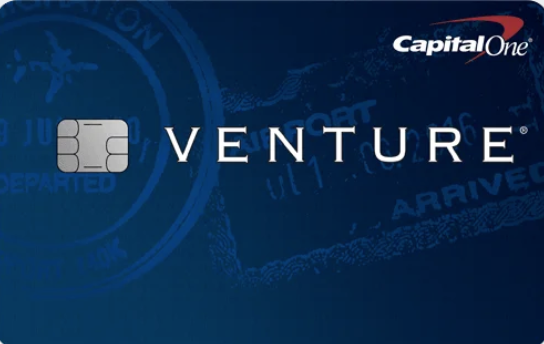Financial aid guide for university and college students in Canada
Post-secondary education costs add up. The good news is that numerous grants, bursaries and loans are available to help shoulder the financial burden. Here’s how to access them. The post Financial aid guide for university and college students in Canada appeared first on MoneySense.

Financial aid is rarely an afterthought, but student debt is often a bigger problem than most university and college students in Canada anticipate. Rising tuition fees and expenses of going to college or university have become increasingly large burdens to bear for students—many of whom are already dealing with pressures from the cost of living on their own for the first time.
What is the cost of that help? A 2024 Canadian University Survey Consortium survey of graduating students found that 45% of students finished school with debt: “The average debt among all students is just under $13,000 but more than doubles to almost $29,000 when only those reporting debt are considered.” In addition, it noted, “Students required over $19,000 to finance their current year of education, most commonly relying on parents, family or spouse, current employment, and government loans.”
These numbers can be unsettling to hear as a student, or as a parent. This student financial aid guide can help you understand your options, how the programs work, and how to apply and qualify for them. Remember, you have nothing to lose from applying!
How much does college or university school really cost in Canada?
As you probably already know, going to college or university is a big investment, and tuition fees can vary widely by academic program. On average, though, Canadian undergraduates paid $7,360 in tuition fees for the 2024–2025 school year, and graduate students paid $7,662, according to data from Statistics Canada. International students paid significantly more: $40,114 for undergraduate studies and $23,233 for graduate studies. (See average tuition fees for each province and territory, and 2024–2025 tuition fees by university.)
Beyond tuition fees, there are many other expenses during your time in college or university, including:
- Rent: Varies widely by location, but the national average monthly cost of a purpose-built, two-bedroom rental apartment in May 2025 is $1,447, according to the Canada Mortgage and Housing Corporation (CMHC). For a two-bedroom unit in the condo market, the average monthly rent is higher, at $2,199. If you shared with a roommate, your cost would be about $723 or $1,100, respectively.
- Groceries: About $350 to $400 per month
- Food on campus: Varies by school and meal plan; at York University in Toronto, for example, meal plans for students living in residence in the 2025–2026 school year range from $3,800 to $6,950
- Books/course materials: $500 to $1,000
- Travelling home: Varies
- Public transit: $80 to $150 for a monthly transit pass
- Extracurricular activities: A few hundred dollars per month
Students who live at home while going to school can save a good chunk of money. Here are more tips on saving money for university and college students in Canada.
What financial aid is available for students in Canada?
The federal and provincial/territorial governments offer financial aid to both part-time and full-time university and college students in Canada.
The Government of Canada’s Canada Student Loans Program (CSLP) provides financial assistance to students on the basis of financial need. The amount of funding given to help pay for expenses such as tuition, school supplies and living expenses is determined by numerous factors such as family income, tuition, program length and whether you’re enrolled full- or part-time, and school-related expenses, as noted above. For a better idea of how much student aid you may be eligible for, check out the Student Financial Assistance Estimator.
A student loan from the CSLP is publicly funded money, which you don’t have to start paying back until six months after you graduate or leave your studies, and interest won’t accumulate. After the grace period is over, you are responsible for repaying the total amount you borrowed, plus interest. In 2023, the federal government permanently eliminated the accumulation of interest on Canada Student Loans, both new and existing. Any interest accrued prior to that date must still be paid, however.
Your province or territory may grant you a student loan, depending on where you’re going to school and where you live (generally, you must live in the province/territory for 12 months before you can apply). However, with student loans from your province/territory, interest may accrue immediately upon finishing your final term. To get a better idea of how interest rates will affect your monthly payments, check out this repayment estimator tool.
In addition to student loans, college or university students whose family income is below the income threshold may also receive Canada Student Grants: for the 2024–2025 school year, $4,200 per year, or up to $525 per month of study. This grant is available for each year of your undergraduate studies, if you study full-time.
What are Canada Student Grants?
The Canada Student Grants Program provides financial assistance to full-time students based on financial need, but unlike student loans, grants don’t have to be paid back!
The value of a grant depends on your family’s size and income. According to the government: “Until the end of the 2024 to 2025 school year, you could receive up to $4,200 per year or up to $525 per month of study. You can get this grant for each year of your undergraduate studies as long as you are still in school full-time. The school year runs from August 1 to July 31.”
If you are a student with a permanent disability, you are Indigenous or you were in extended society care, you may be eligible for additional government student aid. (See Ontario’s student aid for underrepresented learners, for example.)
If your family’s income is above the income thresholds for Canada Student Grant eligibility (based on the previous year’s gross annual family income), you may not qualify for a grant. However, if you are eligible for a grant as well as a loan, you have the option to decline the loan and receive only the grant.
How do I apply for government student aid?
You can apply for the CSLP through the province or territory where you live. When you apply, you are automatically also considered for the Canada Student Grant, meaning you don’t have to prepare a separate application. The application guidelines and procedures for student financial assistance vary for each province and territory.
Here are the links for every student financial aid program in every province and territory, in alphabetical order.
- Alberta Student Aid
- British Columbia Student Aid
- Manitoba Student Aid
- New Brunswick Student Financial Services
- Newfoundland and Labrador Student Aid
- Northwest Territories Student Financial Assistance
- Nova Scotia Student Assistance
- Nunavut Student Funding
- Ontario Student Assistance Program (OSAP)
- Prince Edward Island Student Financial Services
- Quebec Student Financial Aid
- Saskatchewan Student Aid
- Yukon Financial Support for Students
Keep in mind that there are other grants, bursaries and scholarships that you won’t automatically be considered for when you apply for government student aid. It’s best to check with your guidance counsellor or university or college financial aid office to find out about other opportunities available to you.
Before you apply, prepare yourself by having all your documents and numbers ready. Here is generally what you will need:
- Your Social Insurance Number, as well as the SIN numbers of your parents and/or spouse
- Your tax return information, as well as that of your parents and/or spouse
- Your bank account information for direct deposit
- School information, such as program of study, start/end date, and so on
- Your total expenses during the period you will be in school, such as tuition, supplies, food, rent, transportation, and so on
- Registered education savings plans (RESPs), scholarships, savings (for example, in a tax-free savings account) and other financial resources you may have
Compare the best TFSA rates in Canada
What are scholarships and bursaries?
Consider applying for scholarships and bursaries, as these are types of student financial aid you don’t have to pay back.
Scholarships are sponsored by individuals, companies and charities, and are awarded based on merit for specific achievements, such as academic excellence or extracurricular activities in the community, like athletics or volunteer work.
For bursaries, merit is considered, but they are primarily awarded for students’ financial need. This is determined through the application process where you prove that you may have difficulty paying for tuition or other post-secondary related expenses on your own—some of the information you will be required to disclose when applying for a bursary includes the funding you are already receiving from government student assistance, like your family’s income and your living expenses. If you are eligible for student loans, you likely also qualify for some bursaries.
There are many ways to receive scholarships and bursaries. Individually, the scholarships and bursaries may not seem like a lot of money, but you can apply for and receive multiple awards, which could add up to a significant amount.
As a starting point, check out this list of scholarships, awards and bursaries created by the federal government.
How do I apply for scholarships and bursaries?
Scholarships and bursaries are meant to help students succeed under specific financial or educational circumstances. There are too many to count, coming from a wide variety of donors, from local businesses to large corporations, the university or college itself and non-profit organizations, as well as federal, provincial and territorial governments.
You can also visit your university or college financial aid office to find out more about the types of awards available, and which scholarships and bursaries you might qualify for. Check out StudentAwards and Scholarships Canada. There are government scholarships, too.
You have nothing to lose when it comes to applying for student aid. If you take the time to learn more about what you may be eligible for, you could be pleasantly surprised by how much you’re awarded and how much it can reduce the financial and emotional stress of pursuing higher education.
What do I do if I don’t qualify for student aid?
Perhaps you don’t qualify for student aid, but you still think that you would benefit from financial assistance while you’re in school, or maybe you’ve already maxed out your other student aid options but still have financial needs to be met. If this is the case, you can look into applying for a student line of credit or a personal loan from private institutions, such as your bank or a credit union.
These options can help pay for just about anything from school supplies and tuition to living expenses, which could end up costing more than expected. The amount of money you borrow depends on course load and level of study, and there is typically a cap on the maximum amount that you can receive.
For a student line of credit, you are given a pre-set credit limit, and you only have to pay back what you borrow, plus interest on the amount received. Interest rates on a student line of credit are lower than those offered on Canada student loans, but remember that with a line of credit, you’re required to start paying interest as soon as you withdraw any money.
With personal loans, you’re required to pay back the full amount, interest and any applicable fees over a specified period of time.
The start of your semester can sneak up on you, so it’s best to be prepared ahead of time. Complete your application early so you can receive your funding by the time your classes start. Talk to your family and look at your personal finances to get an idea of what you can contribute to your expenses. Start looking for a part-time job before others beat you to it.
Remember, the most important thing about student aid is to apply. There are plenty of options—you have nothing to lose by applying and seeing what you can get, but there’s so much to gain.
Get free MoneySense financial tips, news & advice in your inbox.
More about student finances:
- How much money does the government contribute to an RESP?
- What to do when you have insufficient or unused RESP funds
- How to manage money as a student
- It’s probably time you switched banks—4 easy steps for Canadians
- Applying for your first credit card? Here’s what you should know before getting one
The post Financial aid guide for university and college students in Canada appeared first on MoneySense.










































































